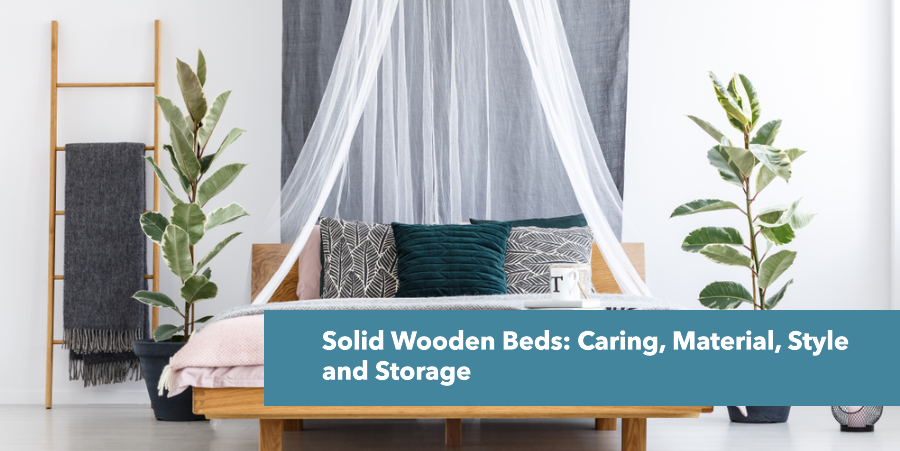What is a Canopy Bed?
A canopy bed is a bed with a canopy, which is typically hung with bed curtains. Think of it as a four-poster bed with fabric draped from the top frame to create a draped enclosure around the sleeping area.
Originally, canopies were used for warmth and privacy, but today they’re primarily decorative. They can add a touch of elegance, romance, or drama to a bedroom.
Do You Have a Custom Project?
Book a free consultation to find the Bespoke Carpentry Solution for your home.
FREE QUOTE REQUESTWhat are the Benefits of the Canopy beds?
Benefits of Canopy Beds
Canopy beds offer a blend of aesthetics and functionality. Here are some of their benefits:
Enhanced aesthetics: Canopy beds add a touch of elegance and drama to any bedroom. They can transform a space into a luxurious retreat.
Privacy: The canopy creates a sense of enclosure, offering a private sanctuary within your bedroom.
Light control: The curtains can help block out sunlight for better sleep.
Temperature regulation: In cooler months, the canopy can help trap warmth, while in warmer months, it can provide shade.
Sound reduction: The fabric can help to muffle external noise.
Customization: You can choose from various fabrics, colors, and styles to match your personal taste.
Wood Types and Quality:
What is the Best Wood for the Canopy Beds?
Oak is undeniably the best wood for a canopy bed. Its strength, durability, and classic beauty are unmatched. While other woods have their merits, oak stands tall as the superior choice for creating a canopy bed that exudes timeless elegance and grandeur.
Construction:
What Types of Wooden Joinery are used in the Canopy Bed?
Canopy beds, due to their weight and the stress they endure, require robust joinery. Here are some common techniques:
Mortise and Tenon: This is a classic joinery method where a tenon (projection) is cut into one piece and fits into a mortise (hole) in another. It’s strong and visually appealing.
Dovetail Joints: While less common for the main frame due to the stress, dovetails can be used for drawer construction in some canopy bed designs.
Biscuit Joints: Used for aligning and strengthening joints, especially when gluing large panels together.
Pocket Hole Joinery: A modern technique often used for concealed joinery, though less common in high-end canopy beds.
Dowels: These are cylindrical wooden pins used to reinforce joints.
Canopy Structure
What is The Support System used in the Wooden Canopy Bed?
Support System in a Wooden Canopy Bed
A wooden canopy bed typically employs a combination of structural elements to provide adequate support for the mattress, canopy, and overall bed structure. Here’s a breakdown:
Primary Support Components:
Posts: These are the vertical pillars that elevate the bed frame and hold up the canopy. They are usually made from sturdy hardwoods like oak, mahogany, or pine.
Frame: This is the horizontal structure that supports the mattress. It can be made of solid wood slats, wooden beams, or a metal frame with slats.
Center Support Beam: Many canopy beds have a central support beam running lengthwise to reinforce the frame and prevent sagging.
Corner Brackets: These connect the posts to the frame, ensuring stability and rigidity.
Canopy Frame: This is often a separate metal or wooden structure attached to the posts to hold the canopy fabric.
What Attachments are Used in the Wooden Canopy Bed?
The specific attachments used in a wooden canopy bed can vary widely depending on the bed’s design, style, and age. However, some common methods include:
Canopy Support Structures
Posts or Pillars: These are vertical structures attached to the headboard or footboard to support the canopy frame.
Brackets: These are often used to reinforce the connection between the canopy frame and the bed frame.
Rings or Hoops: These can be used to create a circular canopy shape.
Bed Base and Mattress Support
Which Slat System is best for the wooden canopy bed?
Solid wooden slats are generally considered the best option for a wooden canopy bed. They offer excellent support, durability, and are compatible with most mattress types.
What is the Recommended Slat Spacing for the Wooden Canopy bed?
The recommended slat spacing for a wooden canopy bed typically ranges from 2 to 3 inches (5 to 7.5 cm) apart. This spacing provides adequate support for the mattress while ensuring proper ventilation.
Dimensions and Weight Capacity
How tall should a wooden canopy bed be?
The height of a wooden canopy bed typically varies, but there are some general guidelines to consider:
Standard Height: The standard height for a wooden canopy bed is usually between 6 to 7 feet (72 to 84 inches or 183 to 213 cm) from the floor to the top of the canopy. This allows enough space for the canopy to be visually appealing and functional without overwhelming the room.
Ceiling Height Consideration: Ensure that there is at least a foot (30 cm) of space between the top of the canopy and the ceiling. For standard rooms with 8-foot (244 cm) ceilings, a canopy height of around 7 feet (213 cm) works well.
Custom Heights: If you have higher ceilings, you might opt for a taller canopy bed. For rooms with ceilings over 9 feet (274 cm), a canopy height of up to 8 feet (244 cm) can create a dramatic and elegant look.
Personal Preference: Ultimately, the height of the canopy bed should also suit your personal taste and the overall design of your bedroom. Some people prefer lower canopies for a cozier feel, while others like higher canopies for a more open and grand appearance.
What is the Recommended Weight Capacity of the Wooden Canopy bed?
The recommended weight capacity for a wooden canopy bed typically ranges from 300 to 700 pounds.
Finishes
What Wood Finishes are Used in the Canopy Bed?
The choice of wood finish for a canopy bed largely depends on the desired aesthetic and the type of wood used. Here are some popular options:
Stain Finishes
Dark Stains: Walnut, mahogany, and ebony create a rich, classic look.
Medium Stains: Cherry and oak offer a warm and inviting appearance.
Light Stains: Honey or natural finishes highlight the wood’s grain for a contemporary feel.
Painted Finishes
White: Provides a clean, modern look.
Light Colors: Gray, cream, or pastel shades offer a soft and airy feel.
Dark Colors: Black or deep hues can create a dramatic and sophisticated atmosphere.
Distressed Finishes
Weathered: Creates a rustic and charming appearance.
Shabby Chic: Offers a romantic and vintage look.
Other Finishes
Lacquer: Protects the wood and adds shine.
Oil: Enhances the wood’s natural beauty and provides a protective layer.
Wax: Provides a soft sheen and protects the wood.
Storage
What are the Popular Storage Options for the Canopy bed?
Here are some of the most common and effective storage solutions for canopy beds:
Under-Bed Storage
Drawers: Ideal for storing linens, blankets, or clothing.
Storage ottomans: Offer additional seating and storage space.
Canopy Storage
Shelves: Perfect for displaying books, decorative items, or small plants.
Hanging organizers: Maximize space by utilizing the sides of the canopy.
Headboard Storage
Built-in shelves or drawers: Create functional and stylish storage.
Over-the-headboard storage: Use for books, photos, or decorative accents.
Styles
What are the wooden Styles for the Canopy bed?
Canopy beds come in a variety of wooden styles to suit different tastes and decor. Here are some popular options:
Traditional Styles
Victorian: Ornate carvings, intricate details, and rich wood tones are characteristic of Victorian canopy beds.
Colonial: Simple, clean lines with a focus on functionality and durability.
Rustic: Unfinished or distressed wood creates a warm, inviting atmosphere.
Modern Styles
Mid-Century Modern: Sleek lines, tapered legs, and a minimalist aesthetic.
Contemporary: Clean, geometric shapes with a focus on simplicity and functionality.
Industrial: Raw materials, exposed metal, and a blend of wood and metal elements.

